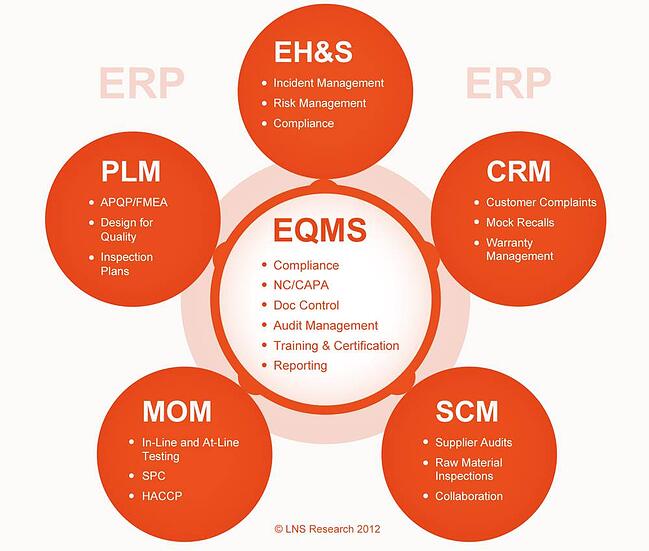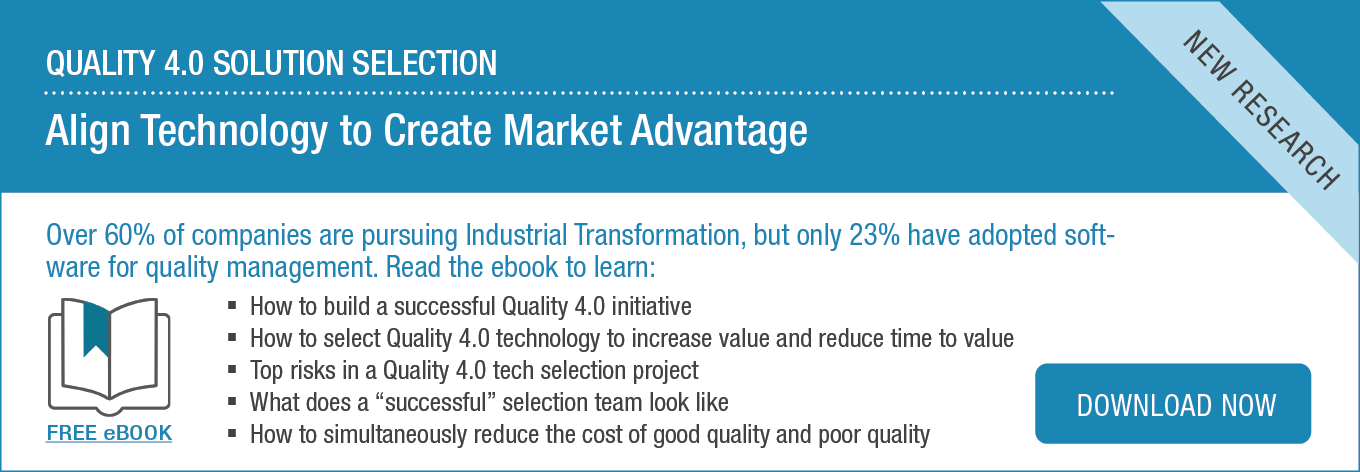If you ask a layperson what an aerospace and defense (A&D) contractor makes, his or her response might be, “Planes," "Missiles," or "Rockets." Of course, that’d be the high-level, cruising altitude of 35,000 feet answer. The reality is that for every company like Boeing, there are tens of thousand of suppliers participating in the production process (Boeing reported having 23,000 suppliers in 2012), each of which must manage hundreds or thousands of complex processes, components, and relationships around the globe.
From product ideation, sourcing, and manufacturing through service, the role of quality management is critical in A&D. Plain and simple, companies that deliver get contracts. What’s interesting is that an integrated quality IT backbone can be the differentiator that gets a company a significant contract. And an IT landscape replete with disconnected homegrown and legacy systems can be the hurdle standing between mediocrity and an environment of continuous improvement and growth.
Market leaders in A&D are adopting a software strategy that tightly integrates Enterprise Quality Management Software (EQMS), Enterprise Resource Planning (ERP), and Manufacturing Operations Management (MOM) and moves away from traditionally siloed quality processes and efforts across the value chain. This article will highlight several benefits of an integrated quality IT architecture.
What is An Integrated Quality Solution in the First Place?
EQMS has been revolutionizing the quality space for quite some time, more recently gaining notoriety and increasing in adoption as the space has matured. As seen below, the technology is essentially a hub that connects quality processes, systems, and data sources, as well as the corresponding cross-functional teams working on projects. Typical EQMS solutions come with prepackaged functionality, such as corrective and preventive actions (CAPA), audit management, documents control, and supplier quality management.

Integrated quality or closed-loop quality is achieved when these core quality processes are harmonized across the organization and interoperate with other critical business and operational systems like ERP, PLM, and MOM.
How Can A&D Companies Benefit from an Integrated Quality Solution?
Because the A&D industry is only becoming more challenging—with regulations, product complexity, cost pressures, and so on—an integrated quality solution will undoubtedly surface as the standard in the near future. Market leaders are already taking advantage of its benefits. Below, are some of the main ones:
1. Reduced cost of quality
Identifying quality issues closer to their source is key to keeping product quality high and costs down. The farther down the value chain a defect moves, the bigger the impact to your organization. Infusing quality with design and sourcing efforts is key to resolving quality issues earlier and avoiding the dreaded hidden costs of quality down the road.
2. Speedy and accurate identification of the source of quality issues
An integrated quality solution enables communication and collaboration, so when quality issues take place the source can be identified and the risk can be mitigated quicker. Connecting, for instance, customer complaints, with design and/or manufacturing can expedite the resolution of a quality issue before it proliferates any further.
3. Improved supplier quality performance
The earlier you extend quality upstream, and then create closed-loop data flows, the better your quality’s going to be first time. If you’re monitoring the quality of suppliers using web-based statistical process control or a supplier portal, you’re likely going to get parts and component that are built within specification, which travels downstream as well.
4. Reduced risk and ensured compliance
Reducing reliance on manual and paper-based processes by making use of EQMS functionalities takes the human element out of many quality processes, and has considerable impacts to quality risk and compliance. Integrating these automation capabilities across the value chain can take that characteristic and compound its impact.
Taking the Steps to Integrate Your Quality IT Infrastructure
Whether you’ve already got a strong quality IT infrastructure or you’re just interested in moving away from paper-based quality processes, there’s always room for improvement and new concepts to learn. Join LNS Research’s President and Principal Analyst, Matthew Littlefield on September 18 at 2p.m. for a webinar where he’ll discuss the Benefits of an Integrated Quality Solution.
